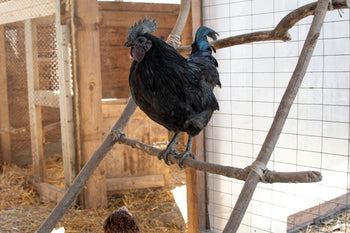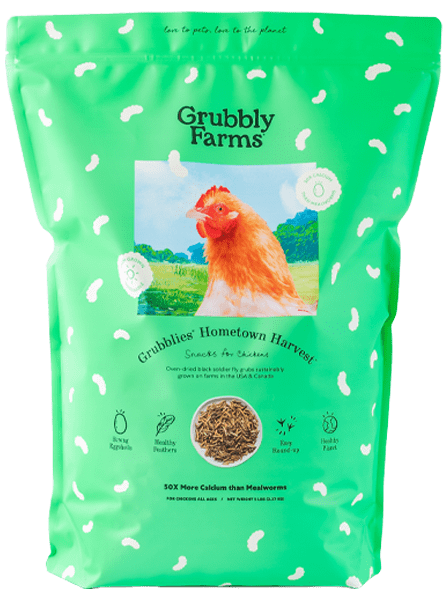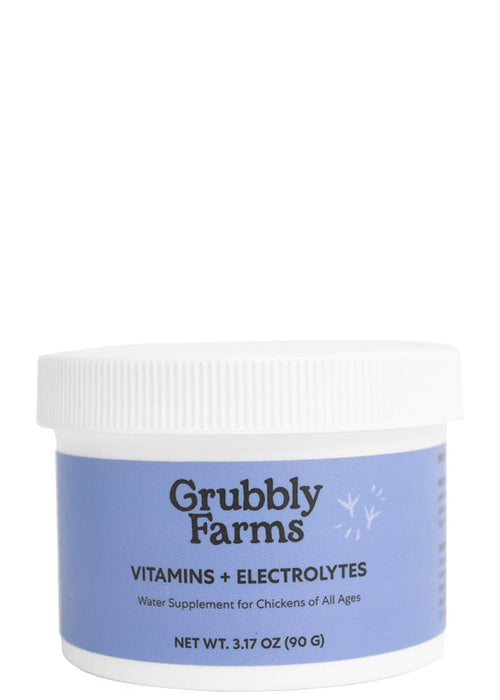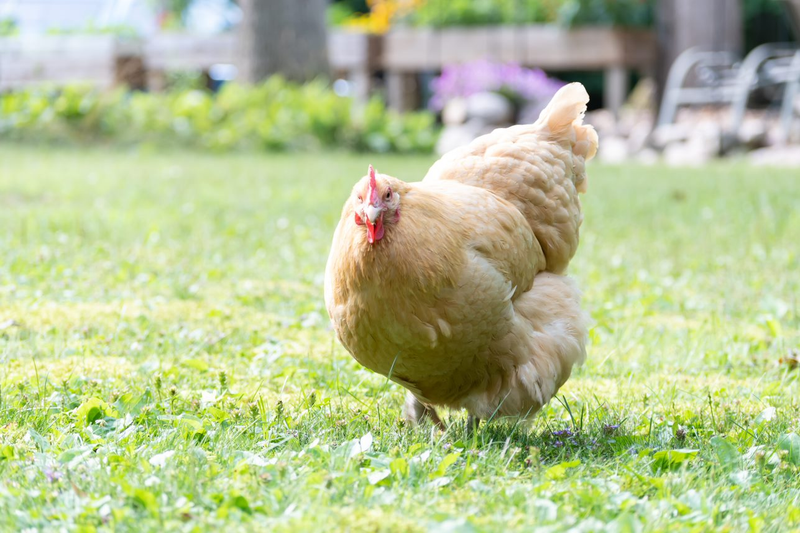Roosting is a natural behavior for chickens. Understanding the why and how of your flock’s roosting habits can help you encourage healthy roosting behaviors in your flock. Since roosting is instinctual, chickens who engage in roosting are healthier and happier. In this guide to roosting, we’ll discuss what roosting is, why roosting is important, and how to properly set up roosting bars. You’ll also find answers to questions like how high should roosting bars be and how much roosting space to allow per chicken. So let’s dive into the topic of roosting!

What Is Roosting?
Roosting is the behavior of chickens perching on elevated bars or branches while they sleep. Roosting and perching are often used as interchangeable terms. However, roosting behavior refers more to the act of birds perching to sleep while perching simply refers to the act of a bird balancing on a bar, branch, or other form of perch. Chickens will ‘perch’ on objects throughout the day but will ‘roost’ at night.

The Purpose Behind Roosting
Roosting is a natural instinct for chickens. It evolves from a bird’s instinctive desire to sleep off the ground for safety. Wild jungle fowl (the domesticated chickens’ ancestors) instinctively roost in trees at night, as do many other species of wild birds. As the sun begins to set, wild jungle fowl will fly up to high perches (tree branches) for safety during the night as they sleep. Roosting in trees or on elevated perches gives birds a better sense of security and safety from ground-dwelling predators.
Domestic chickens still retain the instinct to roost at night. That is why it is important to have perches, or roosts, set up inside the chicken coop. At dusk, chickens will naturally seek a safe place to sleep. By providing roosts in the chicken coop, it will encourage your flock to seek the coop as a safe place to sleep at night.
Roosting is also a social behavior. Roosting behavior is usually based on the flock’s pecking order. Birds who are lowest in the pecking order get the lowest perches for roosting on at night. If there are several birds perched on the same roost, the birds who are lowest in the pecking order will be on the ends of the line.
Birds who are roosted at the ends of the line will sleep with one eye open to watch for predators. Chickens are capable of allowing one side of their brain to rest at a time. At some point during the night, the birds on the end may switch positions so they are facing the opposite direction, allowing the other side of their brain to rest.
Roosting Benefits
Chicken roosting behavior provides benefits for your flock! Since it is an instinctive behavior, chickens benefit from being able to engage in roosting every night. Here are some key benefits of encouraging your flock to roost:
- Safety- When your flock goes in the coop to roost at night, they are safe from predators like rats, raccoons, opossums, and canines.
- Respiratory Health- Chickens who roost on perches in their coop can avoid sleeping close to ammonia that might build up in the litter of the coop.
- Reduces Stress- Roosting allows chickens to behave in an instinctual manner which can prevent stress and pecking order disputes.
- Improved Feather Condition- Chickens who roost at night will be cleaner and healthier due to less exposure to dirt or dirty litter.
How to Set Up Roosting Bars in Your Chicken Coop
If your chickens have access to elevated roosting bars in their coop, your flock will want to go into their coop to roost at night instead of seeking other places to roost.
Installing roosts in the chicken coop is simple. Just follow these basic steps:
- Choose a roosting bar material.
- Figure out how many roosts you need for your flock and what style of roosts your flock will use.
- Create roosting bars that fit your chicken coop design.
- Install the roosting bars according to the proper guidelines.
Those are the basic steps of setting up roosts in the chicken coop. Now let’s dive deeper into the details.
Roosting Bar Materials
Chickens will perch on just about anything that is elevated above the ground. However, to make safe and effective roosts in the chicken coop, you should choose roosting materials that are sturdy, easy to clean, and easy to install. Here are some common roosting bar materials:
- Wood roosts
- Metal roosting bars
- Plastic roosts
Wood is easy to make DIY roosts from, but it is often harder to clean. Wood roosts should be sturdy and durable. They are also easily customizable for your coop design. Treated wood is ideal material for building roosts from since it is less likely to rot, weaken, or break. Treated 2x4 boards are good choices for wood roosting bars.

Sturdy tree branches are a common DIY solution, however, you must make sure the tree branches are not likely to break and that they are free from mold. Tree branch roosts will need to be replaced as they tend to dry out and become brittle, which can lead to the roosts breaking.
Dowels are another wood roost option, however, they are not ideal for long term use. Wooden dowels can be slippery and hard for chickens to perch on. Using dowels that are at least 2” in diameter can give your chickens more surface area to grip and make it easier for them to balance on.
Pre-made roosting bars are often made from metal or plastic materials. Metal roosting bars are usually sturdy and durable. They can be heavy, which may make them harder to install in the coop. Metal roosts can also be slippery and hard for chickens to perch on. Additionally, they can get quite cold during the winter in regions that experience cold winter temperatures.
Plastic roosts won’t get as cold during the winter and they often come with a textured surface. They are also lightweight compared to wood or metal roosts and they are easier to clean. However, plastic roosts may warp, bend, or break over time and they are harder to customize for your coop design.

What Makes a Good Chicken Roost?
Setting up quality roosts in your chicken coop is essential. If the roosts are not easy to perch on, your chickens will not want to use them for roosting on at night. Here are two essential qualities of a good chicken roost:
- Textured or flat perching surface
- Smooth, rounded edges (if sharp edges are present)
First, the roost must be textured or have a narrow, flat surface. Chickens do not tightly grip a perch, like songbirds or parrots. Instead, they balance on the perch and use their feet to lightly grip the perch for maintaining balance. The roost must be thick enough that a chicken can easily balance on the roost. A roost that has some texture but is not rough or sharp can also help prevent a chicken from slipping off the roost.
Second, if there are any sharp edges on the roost (like the edges of a 2x4 board), the sharp edges must be sanded down so they are rounded and smooth. This will make the roost more comfortable for the chicken to perch on and help prevent any foot injuries. If the roost is textured, just make sure the texture does not create any sharp points or slinters. Sanding the roost with coarse sandpaper can smooth out any sharp points while still leaving a rough texture to the roost.
Roost Styles
There are two main roost styles that you can use in the chicken coop. Ladder-style roosts are roosts with several rungs that slant away from the wall of the coop, much like a ladder leaning against a wall. Bar-style roosts are usually mounted parallel to the chicken coop wall and run the length of the wall. It creates one long bar for the chickens to roost on together.
Ladder-style roosts can help maximize coop space while still providing lots of roosting space. They can also provide various roosting bar heights to accommodate birds who need roosts at different heights off the ground. Bar-style roosts are easier to install droppings boards under. A ramp can easily be connected to bar-style roosts to make the roosts easy to access for bigger birds who can’t fly as well.
Roosting Bar Installment Guidelines
When setting up roosting bars in a chicken coop, you must consider the placement and orientation of the roosts. You want to set up the roosts in a way that your flock feels comfortable and safe at night when they roost.
First, keep roosting bars away from nesting boxes. Ideally, the roosts should be higher than the nests since chickens will naturally seek out the highest places to roost. If the nests are higher than the roosts, your chickens will sleep in the nesting boxes instead of on the roosts.
You will also want to make sure the roosts are located in an area that is not drafty. Roosts can be positioned below windows, but they should not be located across from windows so that cold drafts don’t blow on the chickens while they are roosting.

Second, you will want to install the roosts so that there is a little distance between the roost and the chicken coop wall. There needs to be space on either side of the roost so that when a chicken perches on the roost, it is not smooshed up against the wall. Install the roosts so that they are at least 8-12" away from the chicken coop wall.
When installing ladder-style roosts, make sure the roosting rungs are far enough apart so that the chickens roosted on the higher rungs don’t poop on the chickens roosted on the lower rungs. Having the ladder-style roost at a gradual angle (about 45°) can help with this. Additionally, make sure there is at least 12-18" of horizontal space between each roosting rung.
Lastly, you will need to make a plan for cleaning and maintaining the roosts. Plan on regularly scrubbing down the roost bars to get off any poop or dirt that builds up on the roosts. You can use warm water with a splash of white vinegar added to the water. Once the roosts have been scrubbed and allowed to air dry, you may also want to sand down the roosts with coarse sandpaper to get rid of any sharp points or splinters.
Regularly examine the roosts for signs of wear and weakness. Apply pressure to the roost and if you feel any weakness, you will want to replace the roost before it breaks.
Roosts that have cracks or crevices in them can get full of dirt and poop, which can lead to a smelly coop. The crevices are also a great place for parasites to hide in and then come out at night to bug your birds. If you use wooden roosts, you may consider painting or staining the wood to seal off any crevices. Make sure you use a non-toxic paint or stain. Paint will eventually chip off and need to be re-applied. Another option is to oil the roosts. Use tung oil or linseed oil (both are chicken-safe oils) and rub the oil into the wood roosts. The oil will seep into any crevices and make them uninhabitable for parasites. Allow the oil to dry on the roosts before giving your chickens access to the roosts.
How High Should Roosting Bars Be?
Roosting bar height will be dependent on the chicken breeds you have in your flock. Light breed chickens are often excellent flyers and they like roosts that are very high. Heavy breed chickens benefit from roosts that are lower to the ground to prevent leg injuries and make the roosts easier to fly up onto.
Here are some standard height guidelines for roosting bars:
- Standard: 18-24 inches off the ground for most breeds
- Light breeds: 4+ feet off the ground for breeds that like to fly
- Heavy breeds: 12-16 inches off the ground for easy access
If you have a mixed flock of various chicken breeds, there are several options you can consider to accommodate different breeds in your flock. You can install high roosts and then attach a ramp so the less-agile chickens can easily get up on the roosts. Or you may consider making a ladder-style roost that has roosting rungs are various heights.
Bantams do not need roosts that are any different from the roosts used by standard chickens. Despite their small size, they often like high roosts since many bantam breeds are good flyers. They also don’t need roosts that are smaller in size, they can share the same perch sizes as larger birds in the flock.
How Much Roosting Space Per Chicken?
You will also need to consider roosting bar spacing when installing roosts into your chicken coop setup. You do not want your flock to feel crowded when they are roosting. Crowded roosts can lead to bullying, aggression, and injuries. Making sure the roosts are spacious can also help with proper airflow and comfort, especially during the summertime. Chickens will huddle together on a roost to stay warm during the winter, but during the summer they need more personal space on the roosts to stay cool.
Here are some general guidelines to follow when figuring out how much roosting space you need to have in your coop:
- 8–12 inches of roosting space per standard-size chicken
- 10–14 inches per larger breed chicken (Orpingtons, Brahmas)
- 6–8 inches per bantam
Roosting is a social behavior, and chickens like to roost together. If you have several roosts in the coop or are using a ladder-style roost system, make sure there is enough space to accommodate between 3-6 birds on a single roost.
If your flock size grows after you have installed roosts in your chicken coop, make sure you reevaluate the roosts to ensure there is enough space for the new flock members. Signs that you need more roosting space in your coop can include:
- Chickens pushing each other off
- Roosting in nesting boxes
- Sleeping on the coop floor
When Do Chickens Start Roosting?
Chickens will start perching at a very young age. Baby chicks start testing their balance as early as one week after hatching! However, you should not put perches in the brooder until the chicks are at least four weeks old. Chicks who routinely perch before four weeks of age can develop bumblefoot. Chicks will perch, but they will not sleep on the perches.
Chicks will start sleeping on perches at around 7-8 weeks of age. At this point, you may need to coop train the young birds to go into their coop and roost on the roosting bars at night. This is especially common for young birds who did not start perching previously at a younger age. If you are integrating the young birds into an older flock, the young birds may learn to roost at night by watching the older birds.
However, if your young birds are not catching onto the habit of roosting at night, you may need to help them out. At dusk, place each chicken on the roost in the chicken coop. It needs to be dark enough in the coop that the chickens don’t want to move once they have been placed on the roost. After a few nights of roosting lessons, the young chickens should catch onto the habit of roosting at night.
If your young birds choose other places to roost, simply move them back onto the proper roosts at dusk. Block off the nesting boxes every night to prevent the young birds from sleeping in them. If there are laying hens in the flock, you can still block off the nests every night after the hens have laid their eggs in the morning and afternoon. Just remove the barricade every morning so the hens can access the nests.
Common Roosting Mistakes and How to Avoid Them
You can make sure your chicken coop has safe, comfortable roosts for your flock by avoiding these common chicken roosting mistakes:
- Using the wrong materials
- Not considering breed size and mobility
- Placing roosts too close together
- Ignoring proper ventilation and airflow
Using the wrong roosting bar materials can result in roosts that are too thin, not sturdy enough, too slippery, or too rough. If the roosts are too thin, the chickens won’t be able to balance on the roost. If the roosts are too slippery, the chickens may slip off the roosts every time they fly up onto the roost. Roosts that are not sturdy or are too rough can lead to injuries and splinters. Roosts that splinter can be a leading cause of bumblefoot in chickens. Make sure the roosting bars in your chicken coop are sturdy, thick, and textured but smooth to create comfortable roosts.

Roosts that are too high is a common mistake for flocks composed of heavy or large chicken breeds. When the roosts are high off the ground, heavy chickens can injure their feet and legs when they jump down from the roost. Make sure the roosts are easy to access for all the chickens in your flock.
Roosts that are too close together can lead to uncomfortable roosting situations for birds. Make sure the roosts have proper height and spacing. Roosting bars should not be too close together or too close to the chicken coop wall. Additionally, the roosts should not be positioned so that chickens fly into other objects in the coop when getting up or down from the roosts. Make sure the chickens won’t knock into the nesting boxes or bump over feeders or waterers.
Why Aren’t My Chickens Roosting?
If your flock is not roosting at night, you may consider these factors that could be keeping your flock from engaging in the natural behavior of roosting:
- Ventilation & Temperature- The roosting area is too warm, too cold, or drafty.
- Problems with the Roost- There may not be enough room on the roosts, the roosts may be too close to the wall, or the roosts may be hard to balance on.
- Broody- A hen who is broody will sleep in the nesting box.
- Parasites- Mites might be hiding in crevices on the roosts and biting your chickens at night.
Final Tips for Encouraging Healthy Roosting Habits
Roosting is a natural behavior for chickens to engage in. Encourage your flock to roost at night by installing safe and comfortable roosting bars in the chicken coop. You can use ladder-style roosts to accommodate a flock of mixed chicken breeds, or a bar-style roosting system may fit better with your coop design. No matter what roosting system you provide for your flock, make sure you monitor their nightly roosting habits and address any bullying or overcrowding right away. You may need to make adjustments to the roosts in the coop based on seasonal weather changes or a change in flock size. Providing roosts in the chicken coop can help your flock stay happy and healthy!


















